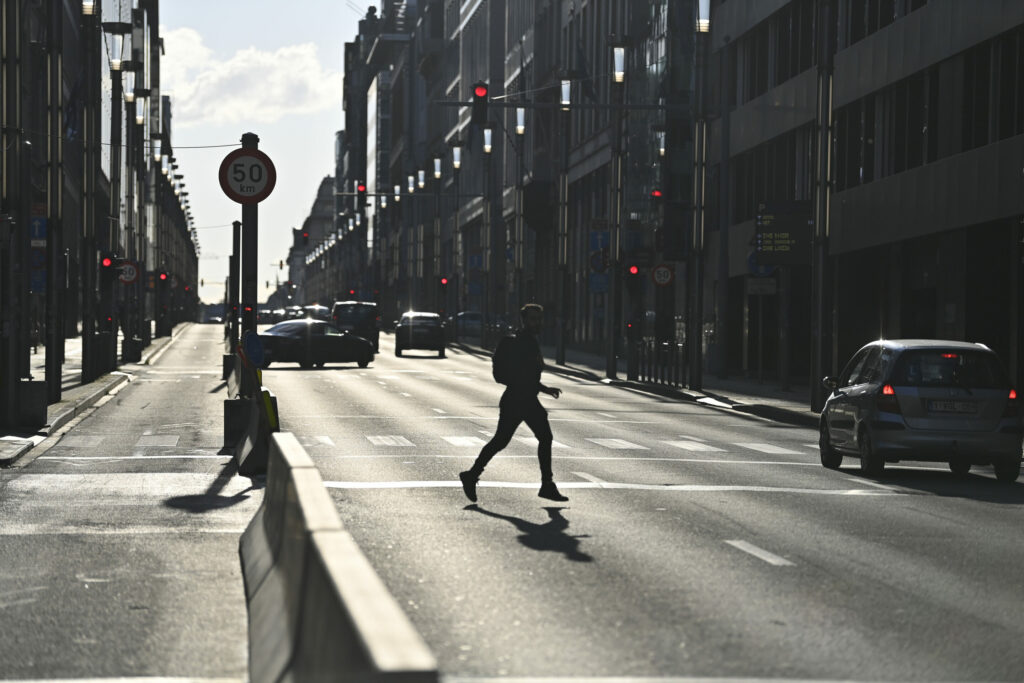This weekend marks the switch to wintertime, meaning it will be dark an hour earlier in the evening. In the weeks following this switch, the number of pedestrians killed in road accidents shoots up.
Clocks will go back an hour at 03:00 on Sunday morning. While mornings will be brighter, the sun will also set one hour early, which is dangerous for pedestrians, Vias Traffic Safety Institute has warned. The number of pedestrians who die or are injured in road accidents after the switch from summertime to wintertime soars, Vias' new statistical analysis of data from 2014 to 2023 showed.
"The switch to wintertime marks the start of a risky period," spokesperson Stef Willems said. The data collected shows the most dangerous period is during rush hour, particularly between 16:00 and 19:00, when three times as many accidents are recorded than in the morning.
Across the country, the number of accidents involving an injured pedestrian during rush hour increased on average by 35% from October to November.
In Brussels and Wallonia, this figure is higher, at 41% and 42%, respectively.
Reduced visibility
The rise in the number of fatalities and seriously injured pedestrians is even more worrying. This figure increased by 77%, on average, between October and November. In Flanders, the number even rises to 82%.
"Not only are there more accidents, but they are also more serious," said Willems. While in October, Vias observed 110 deaths and serious injuries per 1,000 injury accidents, this rose to 144 deaths and serious injuries per 1,000 accidents in November, after the clocks went back.
This could be explained by the fact that the impact rate when drivers collide with pedestrians is higher after the hour change because of reduced visibility. "Some drivers do not see the pedestrian and brake later or not at all."
Vias stressed that being highly visible as a pedestrian is "hugely important". "Wear reflective clothing or fluorescent material. This will make you much more visible to car drivers." With reflective clothing, people can be spotted up to 150 metres away, while with dark clothing, visibility is reduced to 20 metres.
Related News
- Driving under influence: What are the limits and fines in Belgium?
- Small electric cars have far greater risk of serious accident
Pedestrians are also advised to look several times and to make sure the car driver has stopped before crossing. "Having right of way does not necessarily mean you should just cross blindly," Willems said. Finally, using pedestrian crossings is vital. "Despite the fact that accidents sometimes occur on them, they remain the safest places to cross."
However, drivers also hold responsibility. They should be extra vigilant and adjust their behaviour, "especially by slowing down near pedestrian crossings." Vias also noted that a pedestrian can hide behind another. "If you stop to let a pedestrian cross, double check that no other pedestrian is following right behind."

